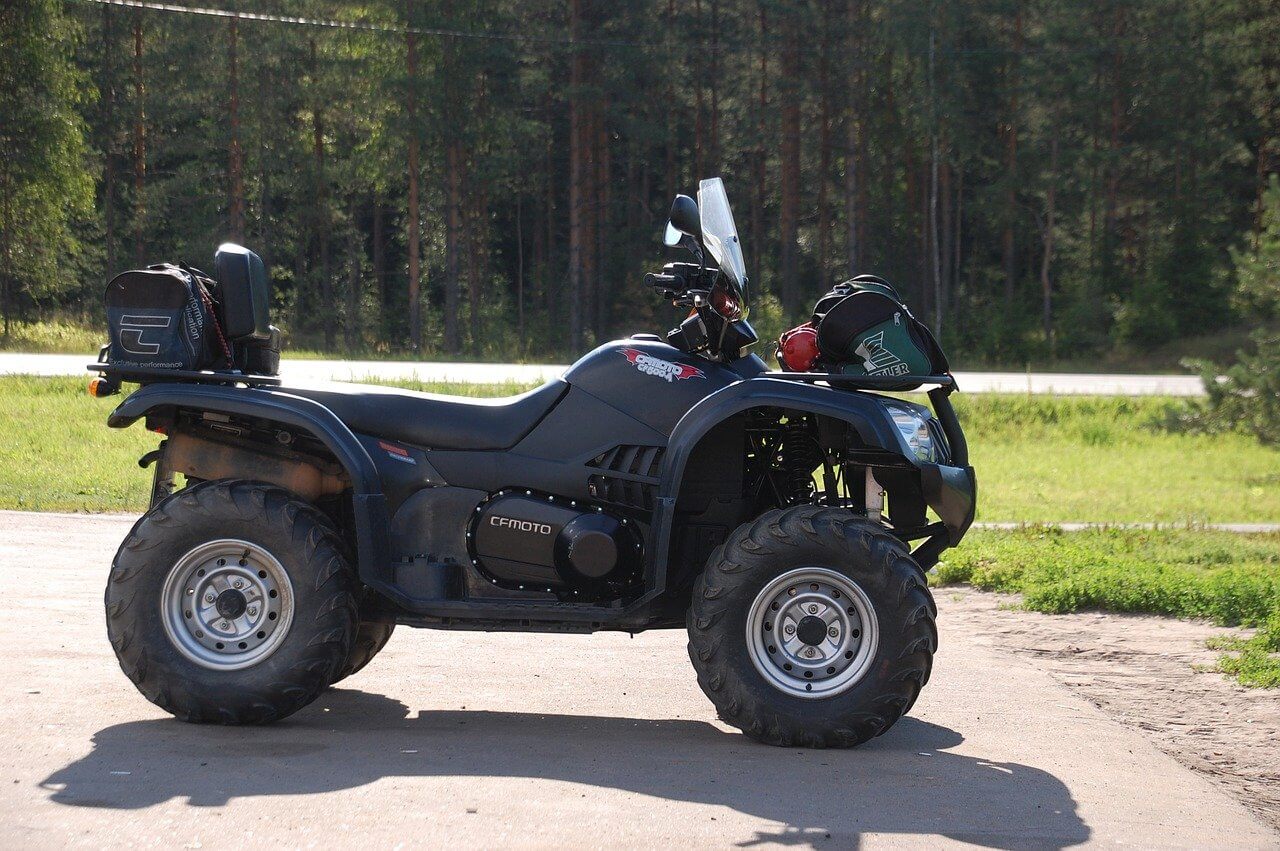The stator is what keeps the battery in your ATV charged up. If your stator is bad, it’ll result in a dead battery. Here’s how to test your ATV’s stator to determine if it’s the problem.
The stator consists of spinning magnets that generate electricity in wire coils. Most ATVs use a stator with three separate coils, what’s known as a three phase stator. Electricity from the stator is carried to a voltage regulator, also called a rectifier, which then charges the battery.
What You'll Learn Today
How Do I Know If My ATV Stator is Bad?

A dead battery doesn’t automatically mean that your stator is bad. Before you even test the stator, there are a few things to check first.
The first thing is to do a battery check. The best place to do this is at an auto shop. They’ll diagnose the health of the battery, and tell you whether it can still hold charge.
Also, check for loose and rusted connectors and wiring.
If the battery, connectors and wiring seem okay, check the rectifier or voltage regulator. If it’s not working properly, the battery will not charge.
Below is a video on how to test an ATV rectifier using a digital multimeter.
If the rectifier is good, you can now move onto the stator. You’ll be using the same multimeter you used to test the rectifier, to check if the stator is good. You’ll also need your ATV’s service manual.
How to Test an ATV Stator
Remove the stator from the engine compartment of your ATV and lay it on a table. Identify the main connector with the three wires leading into it. In the connector are pins corresponding to each of the three wires.
Take your multimeter and turn it to the ohm setting. We are doing a resistance test. Open your service manual to where it states the proper resistance values for the stator.
Insert one multimeter lead into pin 1 and the other multimeter lead into pin 2. Note the reading. Then test pin 2 against pin 3, and finally pin 1 against pin 3.
Compare the resistance readings you’ve gotten with the ones listed in the service manual. If they are not within the manufacturer’s range, your stator is bad and you need to replace it. The same applies if the multimeter shows OL (open loop).
You can also do an insulation test, to make sure the stator is not shorting to the ground.
To do this test, insert the multimeter lead into pin 1 and touch the other lead on the body of the stator. This time, you want an OL reading. If the multimeter displays a number, it means the stator is shorting and you need to get a new one.
Repeat with the other two pins.
For more help testing your ATV stator, here’s a step by step video.
How to Do a Dynamic Stator Test
A dynamic stator test measures the voltage coming out of the stator. If the voltage is lower than expected, it can indicate the stator is not generating enough power to charge the battery.
You’ll need to have your ATV engine running at a constant RPM to do a dynamic stator test, so you’ll need two people for this.
Note that a dynamic test requires you to have a charged battery, otherwise the engine won’t start.
First, identify the stator connector coming out of the engine case. Disconnect it so you can access the three pins.
Open the ATV’s service manual to the stator test page. Check the test RPMs. Most manuals list three test RPMs.
Take the multimeter and turn it to the VAC setting. Have someone turn on the engine and maintain the RPM at the required number.
Using the multimeter, measure the voltage of the three pins against each other: pin 1 to pin 2, pin 2 to pin 3 and pin 1 to pin 3. Note the average reading.
Go to the next RPM stated in the manual and repeat the test.
Compare your readings against those specified in the manual. If they are not within the manufacturer’s range, you need a new stator.
What Are the Signs of a Bad Stator?

Because the primary purpose of a stator is to keep the battery charged, the most obvious sign of a bad stator is a weak or dead battery.
If your battery charges well on another charger, or it has padded a more thorough check, then the problem could be the stator.
Just make sure you’ve also tested the rectifier and checked the wiring.
Sometimes, you’ll notice that your engine struggles to start, or that it does quickly especially when you are using your headlights or any electrical components.
But the most sure way to diagnose a bad stator is using a multimeter. Do a quick resistance test on the connector and compare the numbers to those in the manual. And if you get an OL reading, get a new stator right away.
By the way, you don’t even need to remove the stator from the ATV. Once you disconnect the main connector, you can do a static test as well as a dynamic test.
How To Test A Stator With A Test Light?
If you don’t have a multimeter, you can use a test light to do a rough stator test. I say rough because this test doesn’t tell you much.
A test light only shows that there’s continuity between the different pins. And if you don’t know the exact resistance values, it’s hard to tell if the stator is bad.
You’ll need to find a way to rig the test light to have two leads; the one it already has plus another one so you can test the pins against each other. You can use a crocodile clip to attach a narrow probe.
Insert one lead into pin 1 and the other into pin 2. If the tester lights up, it means there’s continuity. If it doesn’t, it’s a clear indication your stator is bad. Repeat with all other pin combinations.
You can also do an insulation breakdown test by inserting the tester into one of the pins and touching the other end on the body of the stator. If it lights up, that’s a problem as it indicates shorting.
Can You Repair a Bad Stator?
Repairing a bad stator involves taking it apart and unwinding the coils. You’ll probably need new wires, and then you have to wind them carefully.
If you have the skills and time, you can give it a try. Alternatively, see if you can find a pro who can repair a bad stator.
But often, it’s better to just buy a new one.
The good news is that ATV stators are pretty reliable. It’s unusual for them to go bad unless they are very old. So even if you have to buy a new one, it’s likely the last one you’ll ever need to buy.